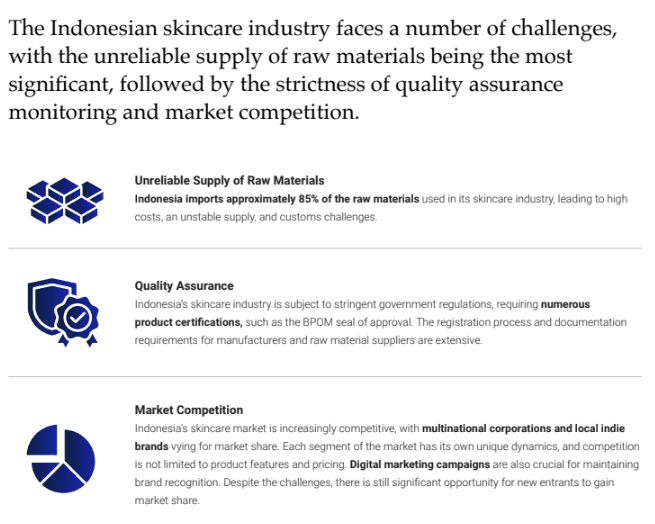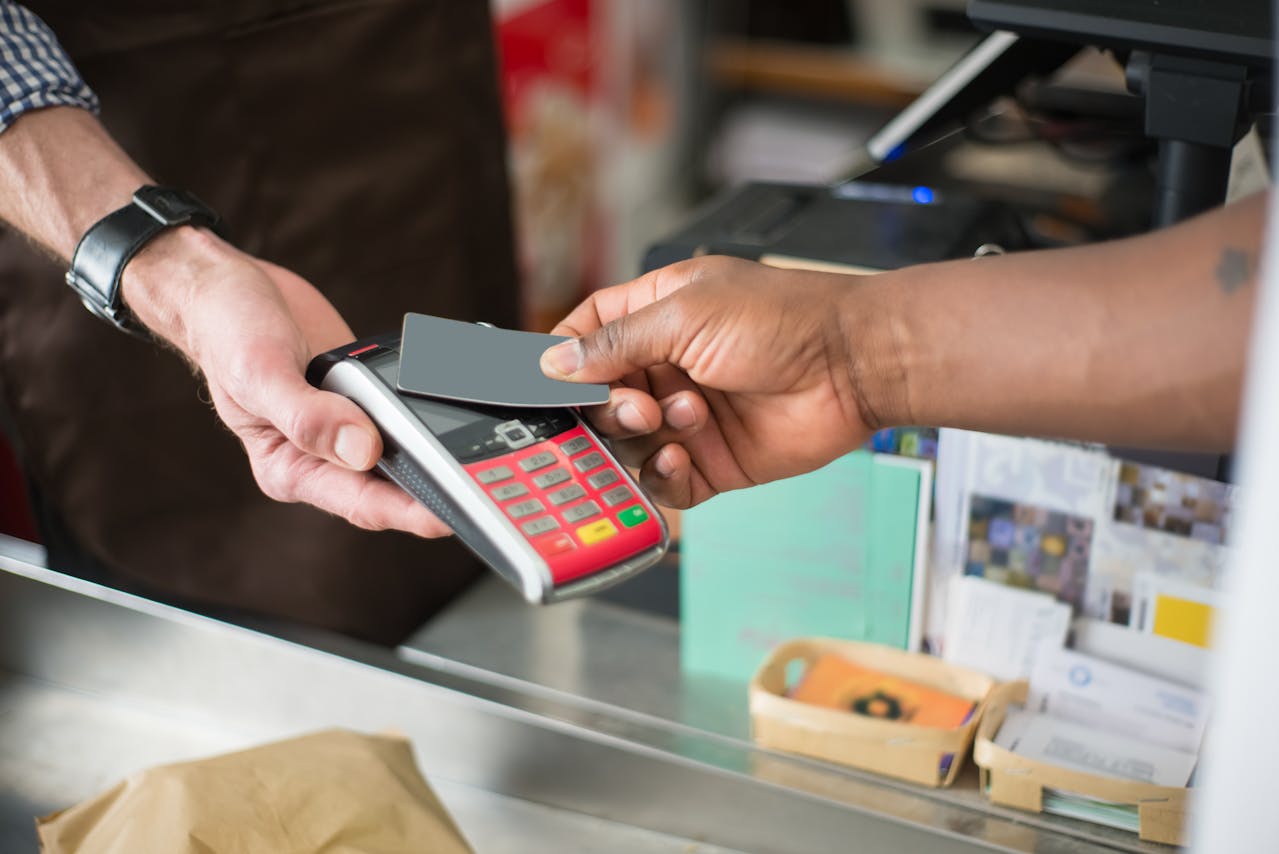

Entering and succeeding in Indonesia's skincare market presents many challenges and threats for businesses aiming to carve out a niche in this dynamic industry. From supply chain disruptions to regulatory hurdles and intense market competition, skincare companies must navigate various obstacles to establish a foothold and thrive in the Indonesian market.
One of the biggest challenges skincare businesses face in Indonesia is the unreliable supply of raw materials. With approximately 85% of raw materials imported, companies grapple with high costs, supply instability, and customs challenges. These hurdles often lead to production delays and increased expenses, impacting the overall profitability of businesses operating in the skincare sector.
Additionally, Indonesia's skincare industry is governed by stringent government regulations, necessitating extensive product certifications, such as the BPOM seal of approval. The registration process and documentation requirements for manufacturers and raw material suppliers are intricate and time-consuming. Non-compliance with quality assurance standards can result in fines, product recalls, and irreparable damage to brand reputation, making adherence to regulations a critical aspect of doing business in the Indonesian skincare market.

Image Source: YCP White Paper
The skincare landscape in Indonesia is characterized by cutthroat competition, with multinational giants and local indie brands vying for market dominance. Beyond competing on product features and pricing, digital marketing campaigns are pivotal in maintaining brand visibility and recognition. New entrants face the daunting task of distinguishing their brand amidst established competitors and capturing consumers' attention in a saturated marketplace.
Understanding and targeting specific consumer segments also presents a significant challenge for skincare companies operating in Indonesia. While young female consumers aged 18-29 with high household incomes represent a substantial market segment, other demographics also offer lucrative opportunities. Developing products and marketing strategies that resonate with diverse consumer groups requires in-depth market research and segmentation analysis to cater to Indonesian consumers' varied preferences and needs.
Meanwhile, consumer preferences are constantly evolving, influenced by trends, social media influencers, and expert recommendations. Skincare companies must demonstrate agility and responsiveness to changing consumer behaviors to remain competitive. Failure to adapt to shifting trends and preferences can render products obsolete and lead to losing market share, highlighting the importance of staying abreast of emerging trends and consumer demands.
The last challenge for brands seeking to penetrate the Indonesian skincare market is determining the optimal distribution channels. While online sales channels offer broad reach and accessibility, offline channels remain essential for reaching specific consumer segments. Developing a comprehensive distribution strategy that balances online and offline channels, while considering the Indonesian market's diverse geographical and demographic characteristics, is imperative for achieving market penetration and sustained success in the skincare industry.
While the Indonesian skincare market presents immense opportunities for growth and expansion, businesses must navigate a myriad of challenges and threats to establish a strong presence and thrive in this competitive landscape. Skincare companies can position themselves for long-term success in Indonesia's vibrant skincare market by addressing these challenges proactively and leveraging emerging opportunities.
By understanding the diverse needs of Indonesian consumers, leveraging digital marketing channels, embracing health and wellness trends, and exploring regional expansion opportunities, skincare brands can position themselves for long-term success in this dynamic and evolving market landscape.
Source: https://ycpsolidiance.com/white-paper/indonesia-skincare-industry-success

Digital Lending in Southeast Asia: Current Trends and Future Outlook
Digital lending in Southeast Asia (SEA) has been on an upward trajectory, significantly enhancing financial access for both individuals and businesses. The region's high internet and mobile penetration rates have facilitated this growth, enabling more people to access financial services conveniently. Governments across SEA are actively promoting digital lending as a means to improve financial inclusion, particularly for the underbanked and unbanked populations. For instance, digital lenders in countries like Indonesia and the Philippines have capitalized on the surge in internet usage to offer innovative lending solutions.

The Latest Trends and Developments in SEA’s Digital Payments Landscape
The adoption of digital payments in Southeast Asia (SEA) has accelerated, driven by technological advancements, government initiatives, and changing consumer behaviors. It has evolved from simple online transactions to sophisticated financial ecosystems that include various payment methods such as mobile wallets, QR code payments, and Buy Now Pay Later (BNPL) options.

Navigating the Digital Era: Future Jobs and Skills in the Age of Digitalization
The job market's transformation driven by digitalization highlights the need to understand emerging trends and acquire essential skills for thriving.

Navigating Key Challenges in Southeast Asia’s EV Market
Southeast Asia (SEA) finds itself at a crucial juncture in the journey towards electric vehicle (EV) production and adoption as the world transitions towards sustainable transportation solutions. The region has several significant keys for developing the EV industry, such as Indonesia's nickel supply and Thailand's EV manufacturing potential. However, the ASEAN EV industry faces many challenges and threats that must be overcome to ensure success in the region.